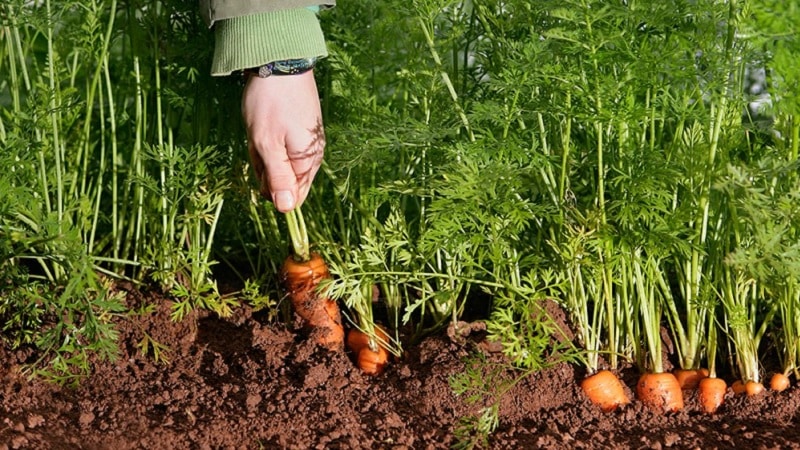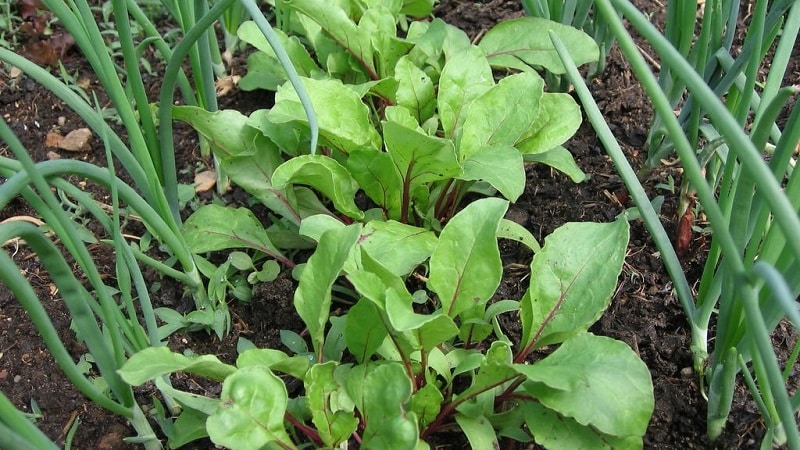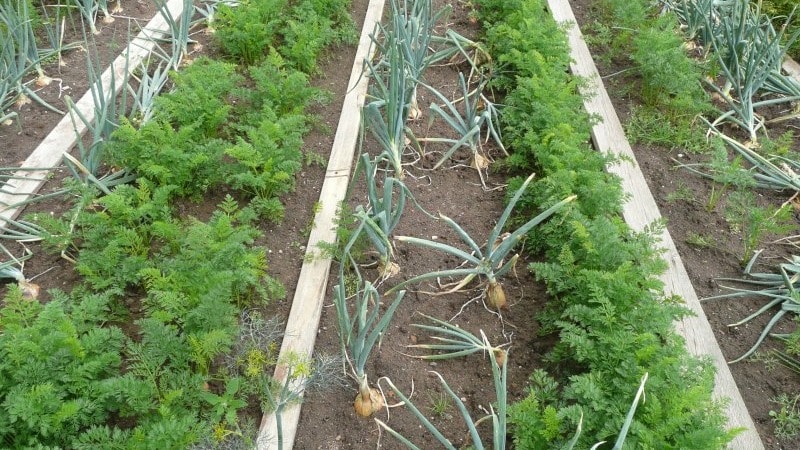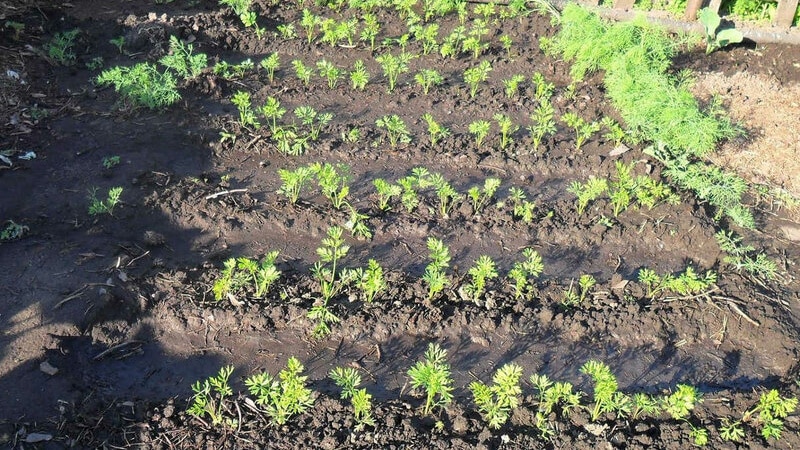Rules for carrot crop rotation: after what to sow, what to plant after and next to
Until the 13th century, carrots were used only as horse feed. Back then, this vegetable didn’t look so appetizing—the purple root vegetables turned brown and unattractive when cooked. But after the familiar orange varieties were developed in the Netherlands, carrots began to be grown everywhere and widely used in cooking.
Carrots are easy to care for. However, in order to grow juicy orange root crops on your site, it is important to follow the rules of crop rotation, that is, periodically change the location of planting crops. The article will tell you after which crops carrots can be sown the next year and what to grow after carrots, according to the principles of crop rotation.
Rules for crop rotation when growing carrots
Like all root vegetables, carrots love loose, fertile soil. If there are not enough nutrients, root vegetables grow small, uneven and tasteless. This situation happens if crop rotation rules are not followed in the garden.
Crop rotation is the alternation of crops planted on a plot. Crop rotation rules are used to increase soil fertility and rational use of nutrients, as well as reduce the risk of disease development and pest invasion.

Attention. The place for growing carrots is changed every year. The crop is returned to its original bed no earlier than after 3-4 years.
Why is crop rotation important?
The main reasons why you should follow the rules of crop rotation:
- The number of pathogenic microorganisms and pests in the soil decreases, since different groups of plants are affected by different pests and diseases.
- Soil fertility does not decrease, but rather increases, because each crop enriches it with its nutrients.
- The roots of some plants secrete toxins that inhibit the development of crops of the same family. Carrots are of this type. Proper crop rotation reduces this negative effect to zero, making the soil healthier.
Compliance with the rules of crop rotation increases yields and improves the quality of root crops.
After which it is better to sow carrots

For sowing, those beds are chosen where unrelated crops were grown in the previous season.
Tomatoes and other nightshade crops are considered the most favorable predecessors for planting. Tomatoes They have a superficial root system and feed in another layer of soil. They are affected by other pests and suffer from other diseases.
Legumes, cruciferous vegetables (e.g. cabbage), potato, onion, garden greens are also considered good predecessors for carrots.
Important! Root crops are planted in former cucumber beds, but not earlier than two years later. After cucumbers, a lot of organic matter remains in the soil, the excess of which negatively affects the development of carrots.
cucumbers belong to the pumpkin family, immediately after them it is good to sow nightshades, legumes, and potatoes.
Unfavorable Precursors
Unfavorable predecessors for carrots are related crops from the Umbelliferae family: parsley, celery, cilantro, parsnips, dill.
Parsley is considered the least suitable predecessor. During the growth process, it creates comfortable conditions in the ground for the proliferation of pathogenic microorganisms. As a result, root crops become sick and grow small and uneven. If there is no other area, it is recommended to disinfect the soil with a strong solution of potassium permanganate before sowing the seeds.
Also, carrots should not be planted after other root vegetables, for example, turnips, beets, radishes, turnips, and celery. This group of plants receives nutrition from one layer of soil, depleting it.
What to sow after carrots
Next spring, after carrots, radishes, sweet potatoes, and physalis are planted. But only with good lighting of the area and protection from drafts. It's a good idea to plant artichokes or cardoons.
Garlic and onions are planted in former carrot beds. Their phytoncides repel carrot flies. Sowing cabbage, potatoes, legumes, and tomatoes will be successful.
In addition to vegetable crops, melons (watermelon), pumpkin crops (pumpkin, cucumber) and berries (strawberries, garden strawberries) are planted after carrots. Melons and pumpkins love organic fertilizers: by preparing a site for them, you will restore soil fertility.
Carrots, like all root vegetables, deplete the soil. To restore the nutritional value of the soil, in addition to fertilizers, green manure plants are used. It can be rye, oats, phacelia, mustard. Green manure not only activates the activity of beneficial microflora, but also destroys pathogenic microorganisms.
What is better not to plant after carrots?
Next spring, it is not recommended to sow related umbrella crops (parsley, celery, cilantro, parsnips, dill) and carrots in the carrot bed. This way you will prevent crops from being infected by pests and the development of diseases.
Carrots take a lot of potassium and phosphorus from the soil. By replenishing the content of these elements by applying fertilizers, you can plant any crop in this area, except for umbrellas.
Compatibility with other crops

When drawing up a site plan, it is important to consider not only predecessors, but also compatibility with “neighbors”. Some cultures help each other grow.
For example, it is useful to plant onions and garlic around the perimeter of a carrot bed. With their strong, pungent odor, they repel the main enemy of carrots - the carrot fly. For the same purpose, tomatoes, beans, and herbs are placed next to carrots.
It is convenient to make combined beds on the site, where different crops alternate. In one bed, furrows with carrots can alternate with herbs, onions, and garlic.
Need to know. When placing carrots and onions in the same bed, keep in mind that carrots in mid-summer will require abundant watering, and the formed bulbs may begin to rot from excess moisture.
Cucumbers and lettuce are often affected by white rot. Carrot root vegetables are also susceptible to the same disease. It is preferable to place these crops away from each other.
What not to plant next to carrots
Carrots should not be sown next to apple trees. The spring season of the carrot fly coincides with the flowering of apple trees and will attract the pest; moreover, such proximity will spoil the taste of both vegetables and apples.
It is not recommended to place dill, anise, celery, and parsley next to orange vegetables. All of these crops attract carrot flies.
Useful tips

Tips and recommendations from experienced gardeners will help you grow an enviable harvest of healthy vegetables on your plot:
- Draw up a plan for your site.Divide the garden plan into 4 zones and each season move the crops from each group in a circle. Then the plants will return to their original beds after 4 years.
- Do not place carrot beds next to large fruit trees. In partial shade, root crops grow worse, and pests feel great.
- To protect against pests, plant marigolds and marigolds around the perimeter of the carrot bed.
- Between the main crops and in areas empty after harvesting, sow green manure plants - white mustard, phacelia, rapeseed. These green fertilizers with a powerful root system and rapidly growing green mass enrich the soil with useful substances. They are sown, and then mowed and plowed into the ground.
Conclusion
Crop rotation is a simple agricultural technique that increases soil fertility and inhibits the invasion of pests and pathogens.
To grow tasty, juicy carrots, choose the right site, taking into account predecessors and “neighbors”. Draw up a site plan and it will be easier for you to follow simple but important rules of crop rotation.